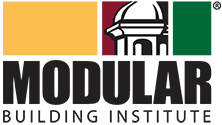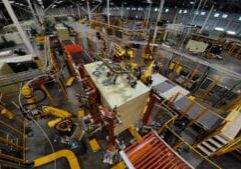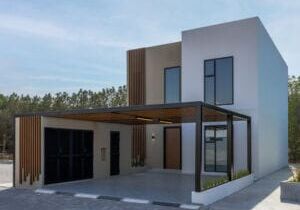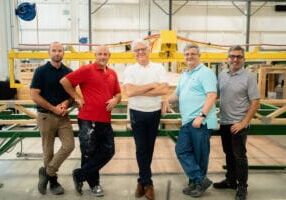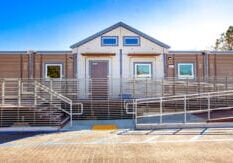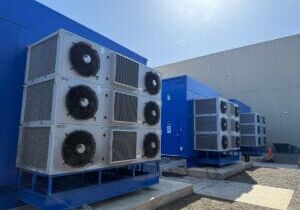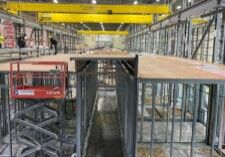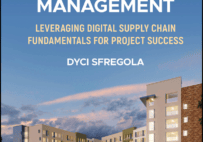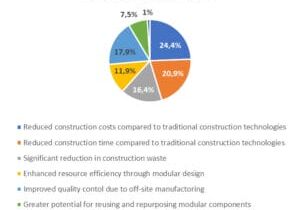The Key to Adaptable Smart Buildings is Less Construction, More Assembly

About the Author: DIRTT creates interior construction powered by technology. Prefabricated. Flexible. Fast. Sustainable. Solutions for the workplace, healthcare, education & more.

Smart buildings are more than tech-enabled structures.
They are living, connected ecosystems of architecture, design, and operational efficiency.
Done right, these ecosystems enable a truly connected environment — helping businesses improve both sustainability, as well as the health and well-being of their employees.
Of course, digital systems play a key role in connected environments. But tech alone isn’t enough to help a smart building adapt to future needs and tech advancement, says Paul Garner, market segment strategist at DIRTT.
“If the structure of a physical space doesn’t allow for adaptability, it can prevent an organization from fully realizing their sustainability and business objectives,” he says. “So we need to back up and rethink how we construct smart buildings in the first place.”
This is why a growing number of architects, contractors, and engineers are looking for alternatives to traditional construction methods.
They know that ending up with a smart building that can be adapted as needed, requires the initial construction process to be just as smart.
Smart Construction 101
“What if instead of constructing a building, we assembled it?” asks Garner.
Rather than building everything on-site from scratch as is traditionally done, smart construction streamlines the creation of key building infrastructure by having it designed and prefabricated beforehand at an industrial manufacturing plant.
Then, it just has to be transported to the building location and assembled.
This is not a new process for anyone who has followed modular construction, but the outcome of building internal space with modular components is adaptability, and that is one of the most sought-after attributes of space today.
With industrialized construction, not only does this make the building process more efficient and require less labor (saving time and expense), but since all the prefabricated components are modular, you end up with a structure that is intentionally designed to be adaptable.
The design part of the smart construction process relies on digital tools to map out exactly what a client wants their future smart space to achieve, says Garner.
“It’s often dependent on advanced design tech such as building information modeling (BIM), which enables clients to pick and choose every detail of a custom interior space using virtual or augmented reality.”
The prefabricated walls, flooring, panels, sub-assemblies and critical services (such as electrical and network cabling) are manufactured, which makes them easy to assemble when they are first installed, and flexible enough to be re-assembled in future.
“You are not only maximizing productivity through lean manufacturing, you are increasing user benefits by creating spaces that can adapt and remain relevant over time,” Garner says.
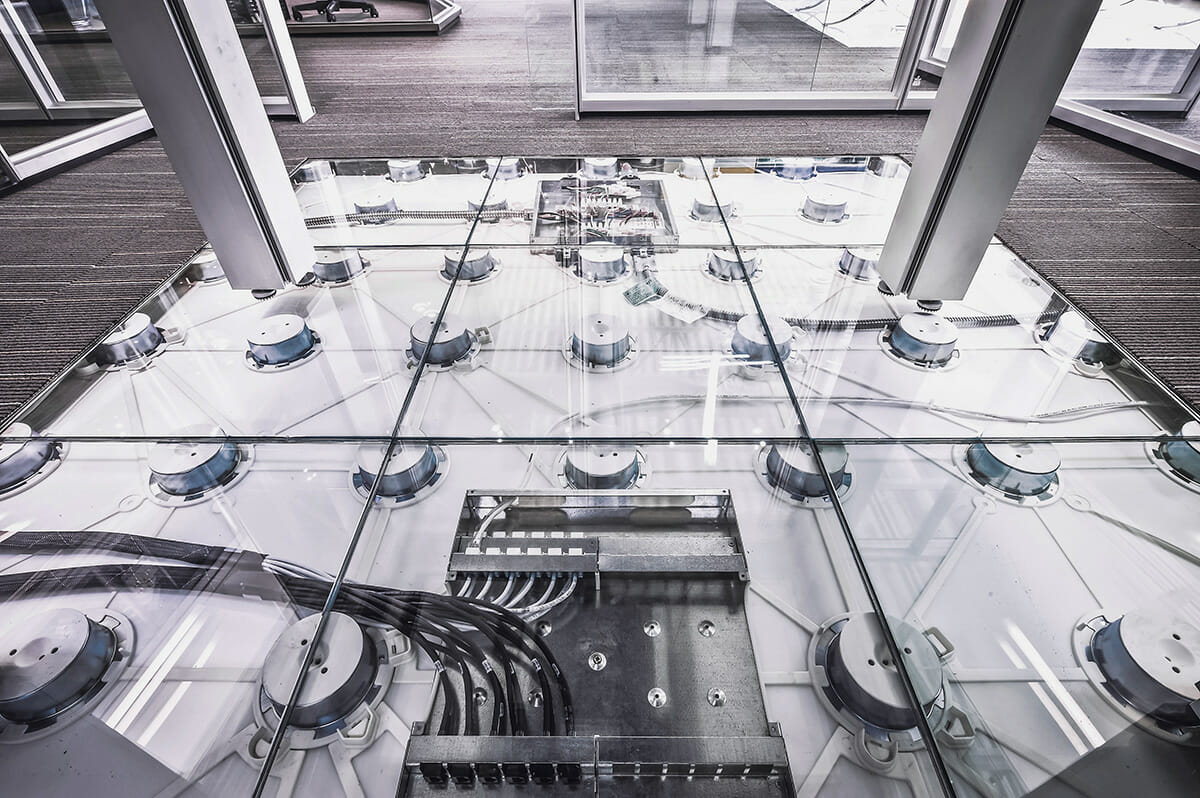
Enable Power and Tech Adaptation with “Connected Infrastructure”
Adaptability is integral not just for visible interior elements like walls and floors, but also critical services infrastructure such as cabling assemblies, electrical, and low-voltage networking cabling.
This is true for all structures, but especially smart buildings that heavily rely on these services to enable a connected environment featuring automation, insight, and more.
“The traditional approach to both installation and reconfiguration of such infrastructure is time-consuming, prone to faults and messy — plus it requires highly-skilled labor, which is increasingly hard to come by,” says Garner.
The modular solution that fixes these challenges is what DIRTT calls “connected infrastructure.”
Electrical build-outs are a good example of this.
On a standard construction project, tradespeople painstakingly set up branch wiring and device connections. It’s a slow and inefficient process that also leads to a lot of material waste, because cabling is measured and cut on-site.
But a connected infrastructure approach utilizes modular cabling, virtually eliminating these problems. “Digital design technology ensures that these manufactured cables are perfectly cut to size at the factory — so there’s less waste,” Garner says.
Additionally, the cables easily click into place thanks to conversion points that transition conventional power for modular use. It’s just plug-and-play, essentially.
Meanwhile, the cables are easily accessible during the installation process beneath or behind modular walls and floors. So there’s no need to demolish, drywall and repaint.
“This all happens without major construction taking place. And in most cases, without having to engage an electrical contractor,” Garner concludes.
Install is nimble, adaptation won’t disrupt regular use of the space, and environmental waste is reduced.
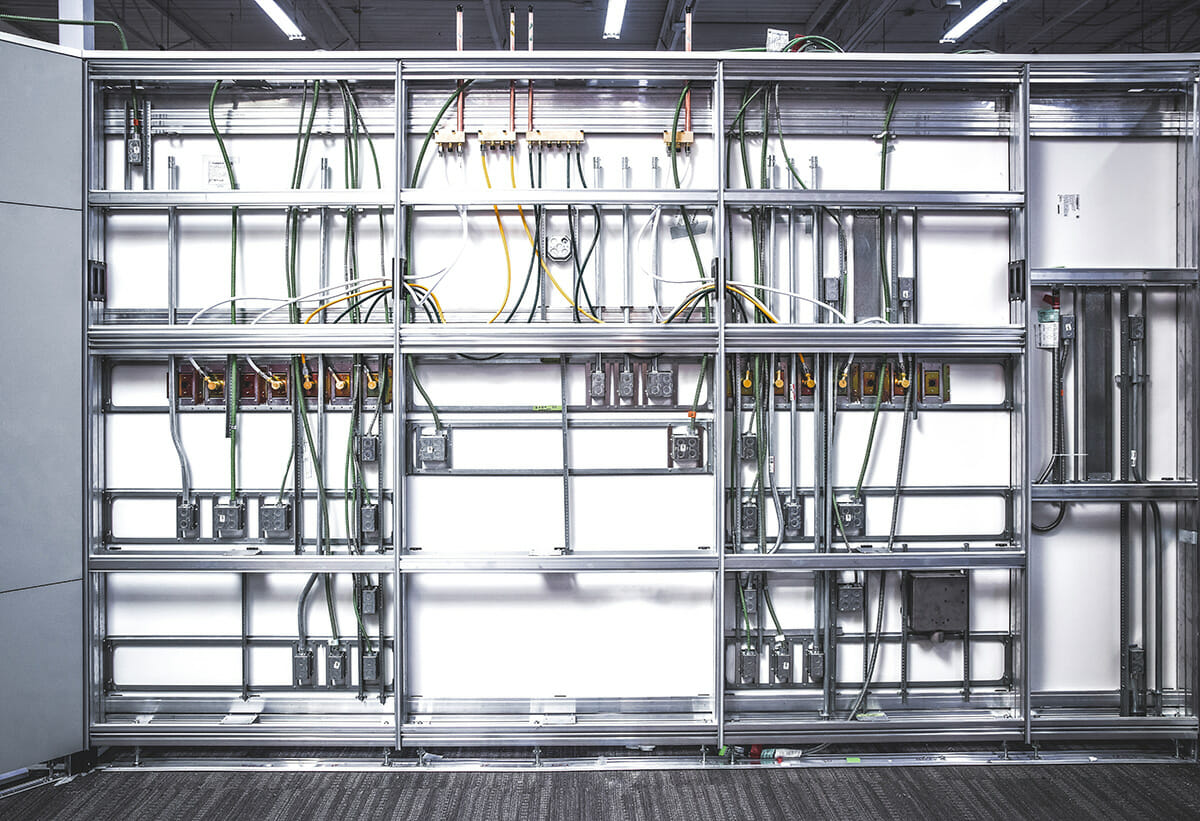
Enable Power and Tech Adaptation with “Connected Infrastructure”
The environmental impact of traditional construction is also driving change in the industry — and interest in smart construction.
“The sheer volume of waste generated by construction can’t be ignored,” says Garner.
Fortunately, the smart construction combo of digital design tools and manufactured products reduces waste in seven key areas: overproduction, transportation, motion, waiting, processing, inventory, and rework.
Most of those provide immediate sustainability benefits. But there’s an intrinsic tie between sustainability and adaptability as well.
“The more adaptable to change we can make our spaces, the more efficient we can be when that change comes,” Garner explains.
And since you’re often able to repurpose modular components, there’s less raw material demand too, which lessens environmental impacts throughout the building’s life cycle.
“This efficiency translates to lowered costs for maintenance and renovation, and a reduced carbon footprint overall,” says Garner.
Though we’ve seen smart building technology play a pivotal role in accelerating the efficiencies of in-building management systems, that dedication to sustainability needs to start earlier, and play a role in every step of a construction project.
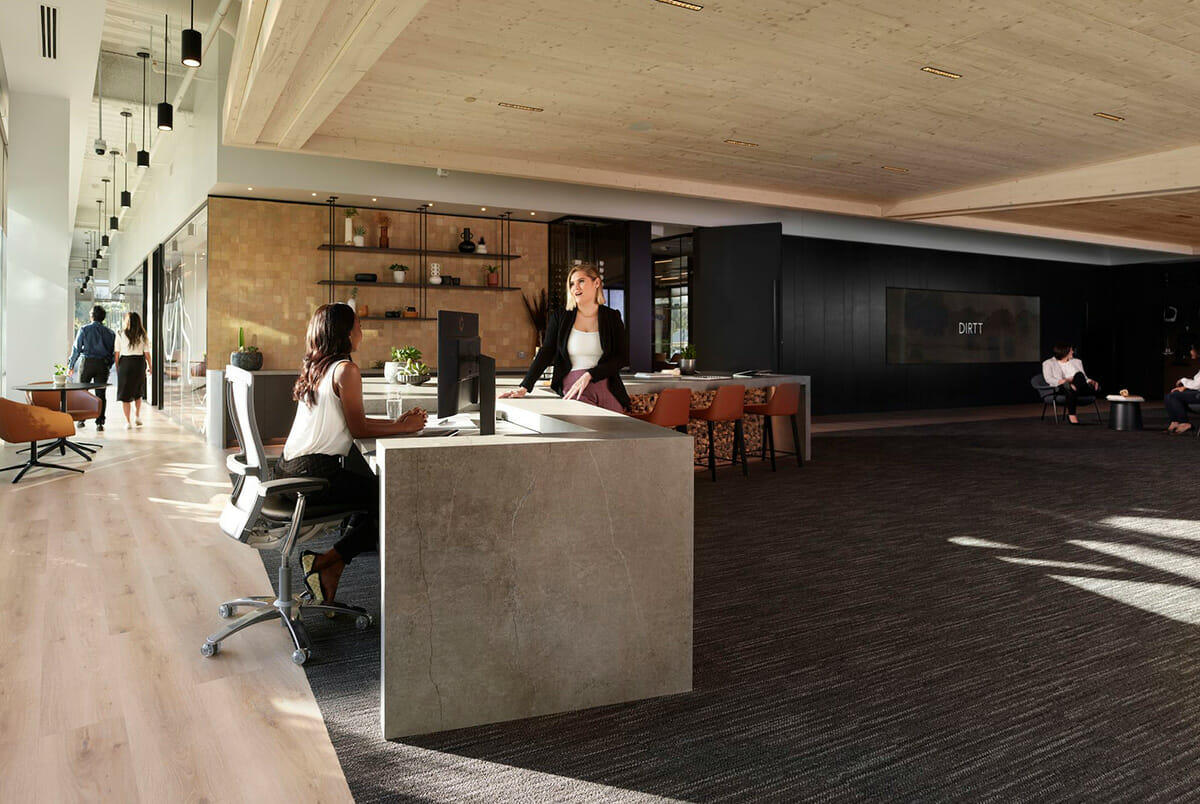
Connected environments enable the health and well-being, and productivity of employees
Smart construction, and especially connected infrastructure, positively impact both the efficiency of your building’s operations and the experience of your employees who occupy the space — which in turn improves your business as a whole.
“The return on investment for smart buildings isn’t just quantified financially by energy savings or less waste. It is a more complex formula including elements such as employee productivity,” explains Garner.
For instance, reconfiguration of a space is often required to re-calibrate occupants within their work environments over time.
And when users ask for workplace adaptation to support their specific needs, this is easy to achieve thanks to the speed and certainty enabled by manufactured infrastructure.
“Because of adaptable components, reconfiguration is quick and fluid, allowing the space to be personalized, as well as creating a more productive and inviting workplace,” says Garner.
Those changes can be made with little disruption to the workforce, and occupants’ exposure to harmful off-gassing from paints and adhesives is reduced or even eliminated due to off-site construction and thoughtful material selection.
An organization’s biggest, most important investment is its people, and the ecosystem that’s enabled by smart construction helps occupants stay safe, comfortable, and productive.
Choose smart construction to optimize your smart building ecosystem
The building industry is perfectly positioned to take advantage of smart construction right now. Everyone from designers to fabricators are embracing digitization — and smart construction methods clearly optimize both the build phase and future configuration.
“This allows us to get it right the first time,” Garner says. “As manufactured construction is adopted more widely, it will help address declining productivity and wasteful processes in the world of construction.”
Meanwhile, the foundational benefits of smart construction approaches (and connected infrastructure in particular) enable real gains in adaptability, sustainability, and the health and wellbeing of occupants.
“It’s time to make assembling, rather than construction of our indoor ecosystems, the norm, not the alternative,” Garner concludes.
Learn more at DIRTT.com.
More from Modular Advantage
Resia: Breaking All the Rules
Resia Manufacturing, a division of U.S.-based Resia, is now offering prefabricated bathroom and kitchen components to industry partners. Its hybrid fabrication facility produces more precise bathroom and kitchen components (modules) faster and at lower cost than traditional construction. Here’s how Resia Manufacturing does it.
How LINQ Modular Innovates to Bring Modular To The Market in the UAE and Beyond
LINQ Modular, with an office and three manufacturing facilities in Dubai, is a modular firm based in United Arab Emirates. The company is on a mission: to break open the housing and construction markets in the Gulf Cooperation Council (GCC) area with modular.
ModMax: Redefining Modular Construction with Confidence and Precision
ModMax was born out of frustration—frustration with five persistent pain points in modular construction: Permitting bottlenecks. Production delays. Rigid designs. Disconnect between “the office” and the field. Lack of transparency and communication.
LifeArk: Disaster-Resilient Housing from Recycled Plastic and 100-year-old Technology
Wee compares LifeArk’s housing units to Yeti coolers, as they are built similarly. Each component takes 15 to 20 minutes to manufacture, has an R-value of 40, and includes molded slots and chases for wiring, plumbing, fire sprinklers, and other utilities.
Building the Future of Modular Edge Infrastructure
The edge data center market is expanding rapidly, driven by the surge in AI workloads, IoT adoption, and the need for localized compute power. In these environments, sustainability, scalability, and reliability are non-negotiable. Cooling is among the most complex challenges for operators—and one of the most decisive factors in long-term success.
Accelerating Light-Gauge Steel Construction: A Semi-Automated Digital Workflow for Off-Site Projects
For construction professionals, the message is clear. By adopting semi-automation and digitalization, companies can deliver projects faster, more accurately, and more profitably, while also building stronger collaboration across teams. The approach is not about replacing people with machines, but about empowering people with better tools and processes.
Why Modular Data Centers Are Gaining Momentum
Artificial intelligence, high-performance computing, and edge applications push the limits of traditional “stick-built” data centers. They take years build, often struggle with high density workloads, and aren’t optimized for deployments near end users. Modular data center platforms are purpose-built to address these challenges, offering flexibility and scalability to adapt to evolving technologies, while opening new opportunities for the modular construction industry.
Supply Chain Innovation in Action: 5 Habits Every Modular Leader Should Practice
By applying these principles to supply chain practices — collaborative planning, strategic procurement, scenario modeling, digital tools, and transparent forecasting — construction leaders can build value chains that are not just efficient and agile, but truly innovative.
Exploring the Role of Modular Integrated Construction (MiC) in Advancing Circular City Principles – A Survey of Stakeholder Perspectives
The survey findings highlight the significant potential of Modular integrated Construction (MiC) in advancing the development of circular cities. By reducing costs, accelerating construction timelines, and minimizing waste generation, MiC offers a promising approach to sustainable urban development.
The Use of MS POLYMER™-Based Sealants and Adhesives in Modular Building
These products combine flexibility and elastic recovery with excellent adhesion to different substrates and have already shown their usefulness in traditional construction. Now it’s time for them to be put to use in the modular construction industry.
